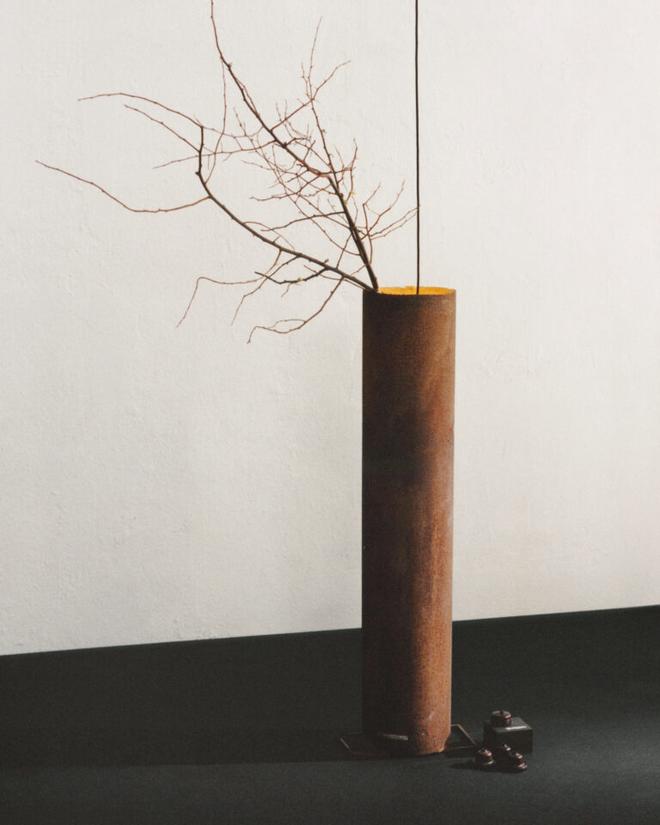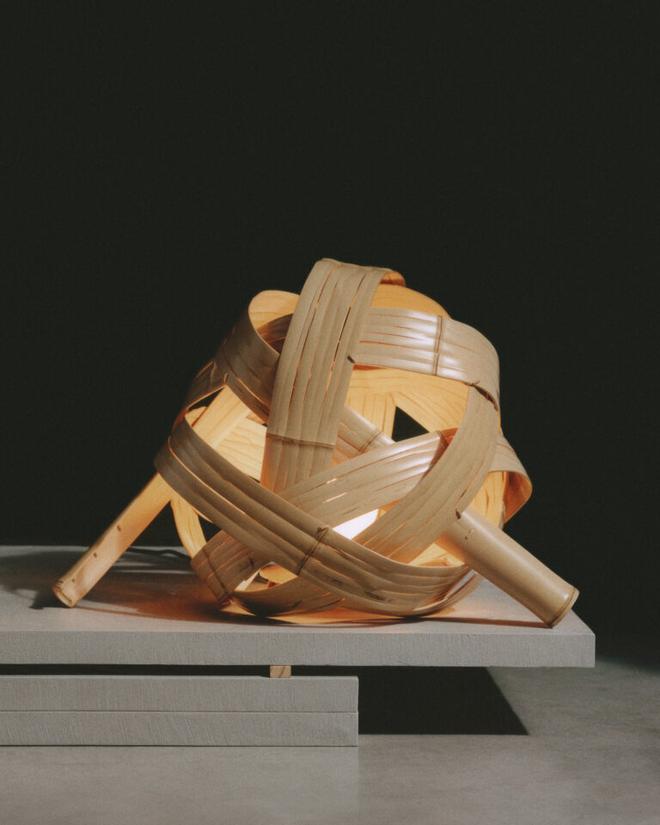Milan is always exciting, as Italy’s historic heart of design, manufacturing and fashion. But it is especially so during the week of Salone del Mobile. Every April, the annual furniture fair sees the streets overflowing as thousands of makers, curators, and buyers convene for a week’s worth of inspiration, conversation, antipasti and aperitivi. In fact, 2024 had a record-breaking 3.5 lakh plus people attend, to see over 1,950 exhibitors from 35 countries.
I always prefer to arrive on Sunday, to wander the fair before the crowds find it. It is when the locals come as well. This year there were more people from outside the design fraternity joining the throng, with hour-long queues at events such as the annual installation by Milanese firm Dimorestudio and the launch of French luxury brand Hermès’ interiors collection. It spilled over to the satellite fair Alcova’s takeover of Villa Borsani, Modernist architect Osvaldo Borsani’s former home, and the 19th-century Villa Bagatti Valsecchi, too. A 45-minute drive away, it featured 80 exhibitors from 27 countries.
There were several trends to be noted, across Salone and Fuorisalone (the series of fringe events and installations across the city held at the same time): innovative tables were ubiquitous, as were interesting vessels and table toppers. But the dominant one was the collaborations between luxury fashion maisons and designers — from Bottega Veneta X Le Corbusier Foundation to Yves Saint Laurent X Gio Ponti archive.
There was a strong spotlight on India, too. Jaipur Rugs celebrated the Indo-Italian connection through three collabs: monochrome carpets with Chanel-owned yarn atelier Vimar 1991; a geometric series by Italian architect Michele De Lucchi; and Zig Zag, a collection of abstract designs by studio DAAA Haus. Vikram Goyal Studio had its second showcase at Nilufar Gallery — a series of limited-edition furniture (consoles and benches) and lighting fixtures (chandeliers and wall sconces) handcrafted by Indian artisans who specialise in heritage metalwork techniques.
Here are a few exhibits that impressed, as I walked around Milan, with its gothic and neoclassical buildings steeped in stories playing backdrop to contemporary design.
Dimorestudio
At Dimorecentrale, the new multi-purpose space by Dimorestudio — one of Europe’s most in-demand design companies — there were a number of stunning exhibits. From Bonacina 1889’s rattan furniture to French fashion maison Yves Salomon’s debut furniture collection, in collaboration with Chapo Création. But Dimorestudio’s co-founder Emiliano Salci’s ‘Limited Edition’ stood out. For the seven-piece collection, the Italian designer revived and contemporarised classic pieces from the late 19th and early 20th centuries. Think a chest of drawers with an organ (keyboard) shaped backrest in veneered boxwood or a lacquered wood sideboard with the base in brushed steel. All the pieces were deconstructed and reassembled, with modern accessories and lacquers in brass, gold and steel. Each piece came personally signed by Salci.

Loewe Lamps
For its eighth, and most ambitious, exhibition at Salone, the Spanish luxury house commissioned 24 internationally renowned artists and designers to create lamps — using materials and styles of their own choosing. Some remarkable pieces ensued, ranging from the rustic to the futuristic.

Standouts included Canadian multi-disciplinary artist Anne Low’s ‘Fir Candle’, made with brass and hand-dyed and handwoven silk; U.K.-based ceramist Akiko Hirai’s ‘Mangetsu to Mikazuki’, a standing lamp in a weathered metal canister holding askew birch twigs; and Japanese bamboo artist Hafu Matsumoto’s homage to Loewe’s famous Puzzle and Hammock bags, with an interwoven lamp.


Nilufar Gallery
The ‘Time Traveller’ exhibition, spread across the gallery’s two venues, was a complex exploration of the story of design and its evolution. Among founder Nina Yasher’s curation, Italian designers Andrea Mancuso and Christian Pellizzari made an impression. Mancuso’s pieces evoked the artist’s process — where abstract lines, doodles and concepts gradually take shape. His solo show, titled Pentimenti, was divided into three: Sgraffito (marble tables and chandeliers), Strata (coffee tables and vases) and Stria (centrepieces). With the creative use of materials such as marble, glass and bronze, the collection was an excavation of craft-driven techniques and novel material applications. Meanwhile, Pellizzari had an arresting display of red chandeliers and lightworks made with Murano glass. The story goes that the designer encountered vast bushes of Brugmansia (a plant with pendulous flowers) on a morning stroll and then envisioned the shapes recreated in Murano glass. His inspiration from Venice and Muranese art was visible in each piece.

Alcova
Among the many installations at the itinerant platform for freethinking design, Spanish designer Alvaro Catalán de Ocón’s new addition to his ‘PET Lamp Project’ stood out. Inspired by the interlinked architecture of the Frafra people’s family compounds in Ghana, the PET Lamp Gurunsi series is woven from local elephant grass and recycled PET bottles by artisan weavers of Baba Tree Baskets. It merged cultural preservation of craftsmanship with sustainable recycling techniques.

Another brilliant exhibit, in its innovation and display, was Japanese architect Junya Ishigami’s new furniture series. Walking into a brick grotto at the villa, originally used for ice storage in summertime, his collection of chairs, tables, partitions and lamps spilled out in an interplay of lightness and simplicity — exploring materials such as leather rattan, wood and steel.

Prada Frames
The writer is based in New Delhi, and has spent two decades refining a contemporary design language within the international collectible design market.







